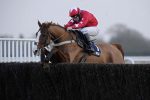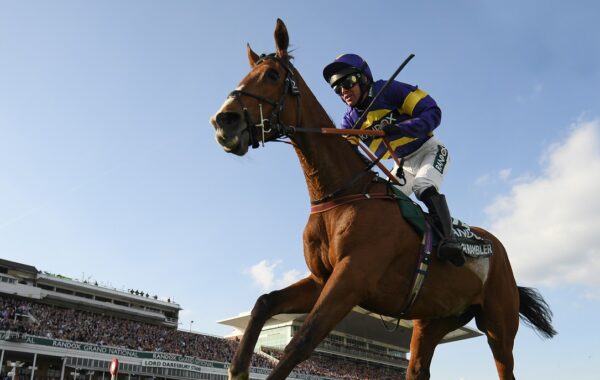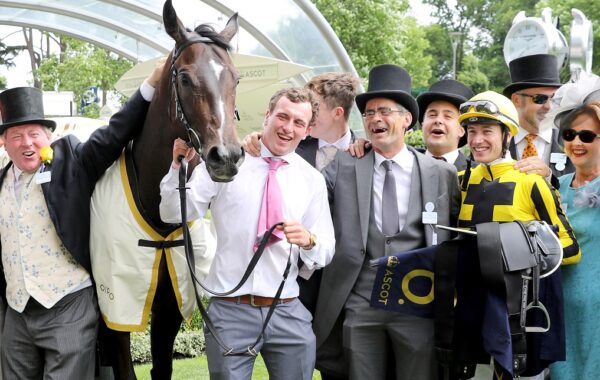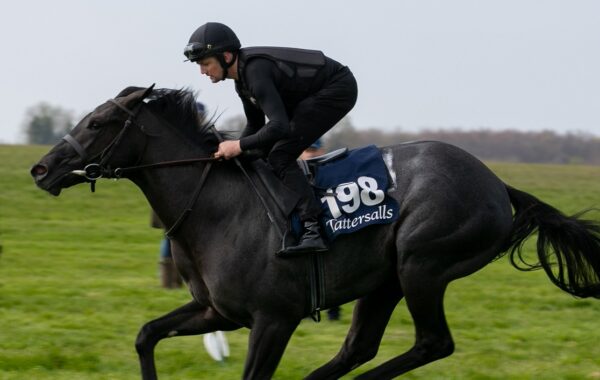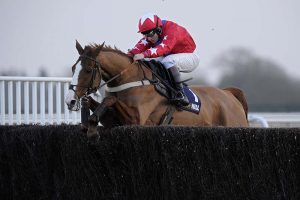When and how did your interest in horseracing first start?
I was fascinated by racing as a child and used to bunk off primary school from the age of nine to go to Sandown and get in through a hole in the fence.
Later, talking to my mother, who was a great follower of showjumping, those early trips to Sandown came up in conversation and I discovered that she knew what I was up to.
But she thought it was rather enterprising and no harm would come of it. They were different times.
More recently I came back into horseracing in National Hunt, through my time on the Board of the Countryside Alliance.
I attended a lot of National Hunt gatherings and found that I really loved the sport. I joined in my first horse in 2010 and chose the Pipe yard upon the recommendation of Sir Mark Prescott.
That came about when I was with the Countryside Alliance, talking on the circuit to the wild fringes of politically incorrect Britain with Sir Mark Prescott and he had always said that if you want a jump horse you must go to the Pipes.
Can you recall the outstanding racing memory of your youth?
It was then as now, the overwhelming sense of horses thundering by and all those wonderful colourful silks.
I was the little Pollyanna and, of course, I was going to run in the Grand National and win it, like all my generation. The National Velvet connection.
You paid €280,000 for Dell’ Arca, winner of the Greatwood Hurdle, and more recently shared in the £450,000 purchase of Un Temps Pour Tout, and now own some ten horses trained by David Pipe. What brought about this sudden prominence in racehorse ownership?
It is not sudden. I am not a completely new owner, as Martin and David say, I have done quite a hard apprenticeship.
One of our earliest horses, Sir Frank, in whom I have a 20th share, recently won at Exeter, nearly four years after I became associated with him!
I started buying at the Arqana sale with the Pipes and their agent in 2011 and on their advice I bought Vieux Lion Rouge, who won three bumpers last season.
At the same time, slightly off-piste and to the Pipes’ alarm, I bought two more by myself, which was quite a learning experience.
Both were cheap horses which so far haven’t done much. Gosh, you learn quickly when you put your money down.
Without being pretentious, my philosophy is that once you’ve started to master something, you want to do it to your best at the top level. I did it with art history, which was my specialisation, and now I want to do it with racing.
That’s the thinking behind my recent joint purchase of Un Temps Pour Tout, the £450,000 sale topper at Newbury’s DBS Hennessy sale, with Bryan Drew, a fellow David Pipe owner.
Bryan and I have the same ambitions about wanting the Pipe yard to have really good horses. And at no time have we been egged on by them. In fact, they have urged caution at all times and alarm at the prices. It’s entirely self-inflicted!
What is it about the jumps game that makes your blood race?
The miracle is that jump racing has survived into modern times because it involves such colossal risks to the jockeys and horses but also to the pockets of those investing because the prize-money, apart from the Pattern races, is absolutely ridiculous.
Therefore the relationship between owner and trainer has to be pretty trusting and strong to survive all the falls and injuries.
I see jump racing as an area of wonderful freedom and slight political incorrectness.
When you look at jump jockeys getting up with a broken collarbone and wanting to ride in the next race, then compare them with footballers, who lie down pretending they’re hurt, you recognise the jockeys as inspirational.
Whenever I get an ache or pain, I just think ‘AP’ and try to carry on.
Dell’ Arca is an exciting recruit to hurdling. What are his targets for the rest of the season and how far do you envisage him going?
The dream would be the Champion Hurdle and ultimately the Gold Cup. Certainly, we’d like to think he is a Cheltenham Festival type, but who knows?
What makes the Pipe yard such fun? Is this an important part of the ownership experience?
It is a huge part of the ownership experience. The yard is incredibly inclusive; we all join in each other’s victories and despairs and have great fun. You meet a wonderful cross-section of extraordinary people.
The partners I have in some of my other horses are road hauliers, the greatest supporter of the yard, Bathwick Tyres, all people who know the value of their money having made it themselves.
I respect all that and we have enormous fun together. After Dell’ Arca won the Greatwood, David’s three-year-old son, Jack, took the trophy to playschool the next day and apparently kept telling everyone “C’aline won it!”
When his teacher asked about his father, Jack replied: “Yes, but C’aline won it.” You see, there is fun at Pond House from the youngest to the top.
You were invited for a stable visit by Willie Mullins after David outbid him for Dell‘ Arca. What were your impressions of the Irish champion trainer’s set-up?
I was also underbidder for ‘A stable visit to Willie Mullins’ at the JT McNamara charity evening at Cheltenham. I sent my bid to the charity and the Pipes joked that Willie Mullins had cost me so much money we might as well pay him a visit.
It was the first day Willie was exercising his horses on the Curragh. The scene was just amazing with legendary horses milling around left, right and centre having just disembarked from two great big transporters – Hurricane Fly, Briar Hill, Champagne Fever, who looked absolutely wonderful. It was so different from an English set-up.
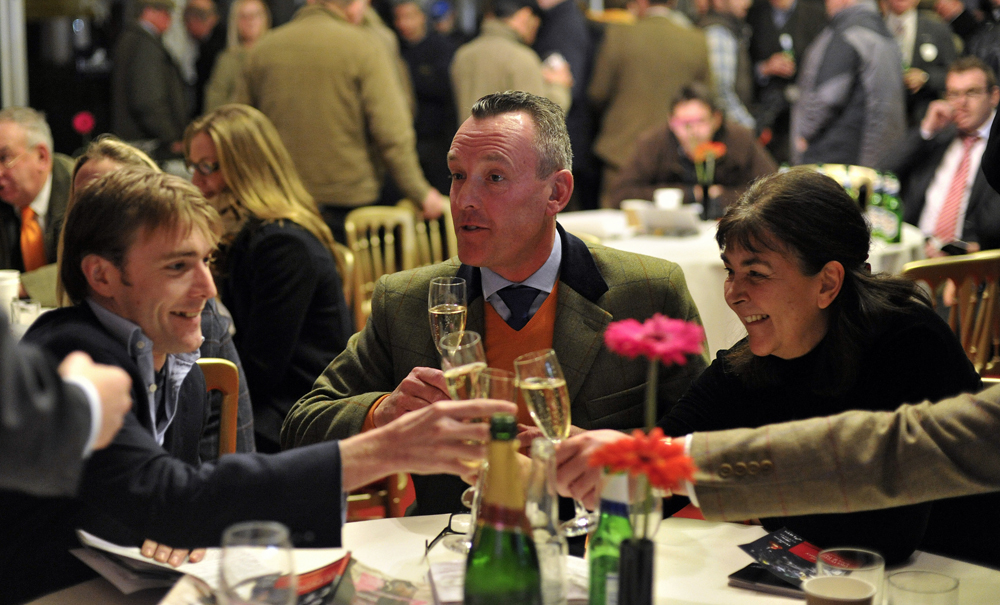
Celebrating the purchase of Un Temps Pour Tout with Tom Scudamore, left, and Bryan Drew
You have been on the Board of the Countryside Alliance and are well known as an advocate for all types of field sports. Do you participate in any of them and have you ever ridden?
Yes, fishing, shooting and I was a keen stalker and occasionally went hunting. I have fallen off many horses out hunting. I support the Cattistock in Dorset but would never jump their fences.
Occasionally I am lucky enough to have a horse to go with the Devon and Somerset Staghounds on Exmoor, which I think is the peak of British hunting.
When you said you “would die in a ditch to defend hunting”, did you mean it? Why is this issue so important to you?
I did. And I also said if it were banned I would take it up, which I duly had to do. They tested my seat to see if I was suitable to go hunting on the last day of legal and the first day of illegal.
They said rather ruefully, ‘Caroline, you don’t have a seat’, and I had to work quite hard at it. But I did hunt on my own little mare, which I re-named ‘Cheree’ to irritate Cherie Blair.
Hunting is important to me because it comes into this area of freedom where what you do with many things in life should be on your own moral compass, and not forced by Government matters.
It is undoubtedly true that people who live in the countryside know and understand the countryside and certainly love animals and are custodians of all of that. It should not be dictated to from people who haven’t even had the humility to go out and see what it’s about.
And I would advocate the same arguments for the Grand National. If you start caving in to certain organisations you will end up having given an inch and will lose the mile.
You must stand up for what you love.
You have written numerous books on the artist Joseph Beuys. What is your fascination with him?
He was German, died in 1986 and was the most wonderful person. His art was based on the notion that we are all creative and his great slogan was that everyone is an artist and that in every field of life there is creativity.
There is a lot of his work in Tate Modern and my collection is on loan to them. I organised most of Beuys’s major exhibitions and wrote a lot of books about him.
Over the years he very kindly gave me some of his works. Everyone has their niche in the subject they’re good at. Just as I like the Pipe yard in racing, Joseph Beuys was the artist I liked.
I didn’t go for Bacon or Picasso, I became an expert in Beuys.
With your experience as a journalist and having worked on films for the BBC and Channel 4, you must have a view on media coverage of racing…
I think the industry has to reach out to the media, not just sit back grumbling about what is written and broadcast. There are some very good racing journalists with a fantastic depth of knowledge.
With my experience on The Guardian, I am in awe of the Racing Post and the level of proof reading that goes on there. For television, there always has to be a story and racing seems to produce them, thanks to AP and the National.
We are also lucky in that there is a story, albeit of huge variation, in almost every horse.
You were The Guardian’s art critic in the 1970s. Was this the most exciting period of your life?
Every time of my life has been incredibly exciting. Working in Africa was exciting, running a big estate in Scotland with my partner, Paul Van Vlissingen, was exciting.
I have always had a wonderful life and the 70s were great to be working for The Guardian. They let you do pretty well anything; in one edition I had articles on seven different pages.
I spoke several languages and knew a lot about Europe. I travelled through the Arab world for two years from 1979-81, writing about the impact of the Camp David Accord and ended up producing a book about the Palestinians called Beirut: Frontline Story.
You studied Art History and graduated at the Courtauld Institute in London and were awarded a Professorship by Oxford Brookes for 14 books published on art history. What does your position involve?
I was given an honorary professorship in recognition of the books I published. I help develop new courses and talk to PhD students and generally keep an eye on what’s happening.
It is a very avant garde, progressive department. I made films for the BBC and Channel 4 and I did conservation work with my partner, Paul, for many years in Scotland and England.
Then in Africa we founded a big re-training of National Park management, which is still going very strong as the African Park Foundation.
What is your biggest complaint about the way racing is run? In your opinion, how can racing be improved?
Ultimately, the people who know the answer to that question are the trainers and the jockeys, and I think they should have a bigger voice and their opinions more respected. I certainly don’t think the authorities should tinker with the Grand National any more until they have seen how the new changes click in.
We should be very aware that the audience is important. Racegoers make a commitment to their day and their money to come and they should be given as good an experience as possible.
The situation at the Newbury Hennessy meeting where security staff were asking men if they were wearing tailored shirts and ties under their coats was really bad.
We have got to attract more people to attend jump racing, not be draconian and put them off. There are far too many exclusive areas on racecourses. Racing has got to reach out to a wide and young audience; they won’t do that by asking men to open their coats to find out what shirts they are wearing.
In a way this all leads on from the wonderful inclusivity you find at the Pipes. Racing needs to follow that example.
From an owner’s point of view there are all the usual concerns about prize-money and the levy.
I think it is most peculiar that one section of racecourse owners, Arena Racecourse Company, is allowed not to join up to a general agreement.
An area very close to my heart is the re-training and re-housing of racehorses and it is important that we do our very best in that field.
Would you ever consider entering the world of racing politics?
Yes, I would if I could be useful when I know enough, and if I’m wanted. I am a good conciliatory voice. I am a firm believer that you should join in the issues around what ever you are doing.
What is your wish for the new year?
More winners with happy horses getting home safely.


